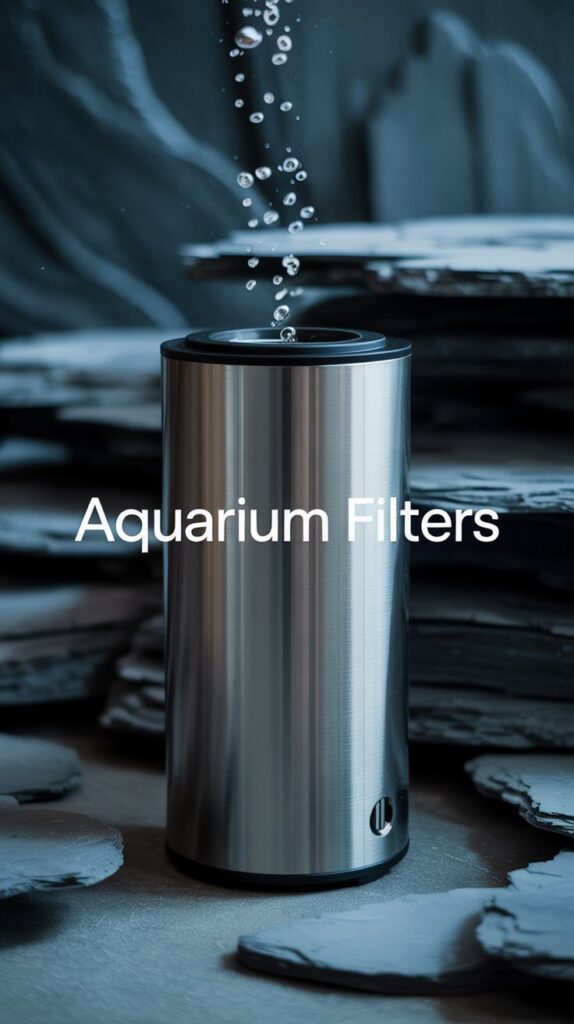Keeping your aquarium clean and healthy is one of the most important responsibilities of a fish keeper. The beauty of any fish tank depends not only on the fish and decorations you choose but also on how well you maintain water quality. That’s where aquarium filters come in.
A good filter ensures your fish have a safe, stable, and oxygen-rich environment. Without it, waste, leftover food, and harmful toxins can quickly build up, leading to poor water conditions and even fish deaths.
In this comprehensive guide, we’ll explore everything you need to know about aquarium filters — including how they work, the different types, how to choose the right one, and maintenance tips
What Is an Aquarium Filter?
An aquarium filter is a device that cleans and purifies the water in your fish tank. It removes waste products, uneaten food, and toxins while circulating and oxygenating the water.
Filters are essential for maintaining a stable environment in both freshwater and saltwater tanks. They help mimic the natural filtration that occurs in rivers, lakes, and oceans — but in a controlled home aquarium setup.
Why Aquarium Filters Are Important

Without a proper filtration system, toxins like ammonia, nitrite, and nitrate can quickly build up in your aquarium. Even small amounts of these chemicals can stress fish and lead to diseases.
Here are the key benefits of aquarium filters:
- Removes Physical Waste – Filters remove fish waste, uneaten food, and plant debris.
- Controls Toxins – Biological filtration converts harmful ammonia into less toxic substances.
- Oxygenates Water – Water circulation from the filter improves oxygen levels.
- Keeps Water Clear – Mechanical filtration removes particles that make the water cloudy.
- Supports Healthy Bacteria – Filters provide surfaces for beneficial bacteria to grow.
The Three Main Types of Filtration
Aquarium filters work in three primary ways: mechanical, biological, and chemical filtration. Many modern filters combine all three methods.
1. Mechanical Filtration
- Purpose: Removes solid particles from the water.
- How it works: Water passes through filter pads, sponges, or floss that trap debris.
- Example: Removing uneaten fish food or plant leaves.
2. Biological Filtration
- Purpose: Breaks down harmful toxins using beneficial bacteria.
- How it works: Good bacteria live in the filter media and convert toxic ammonia → nitrite → nitrate (less harmful).
- Example: Essential for the nitrogen cycle in aquariums.
3. Chemical Filtration
- Purpose: Removes dissolved impurities and odors.
- How it works: Special media like activated carbon, zeolite, or resins absorb toxins and chemicals.
- Example: Removing discoloration from medication or tannins.
Types of Aquarium Filters

There are several types of filters available, each with its own strengths and ideal uses.
1. Hang-On-Back (HOB) Filters
- Description: Compact filters that hang on the back of the aquarium.
- Pros: Easy to install, affordable, combines all three filtration types.
- Cons: May not be powerful enough for very large tanks.
- Best for: Small to medium freshwater tanks.
2. Canister Filters
- Description: External units placed below the tank.
- Pros: High filtration capacity, great for large tanks, customizable media.
- Cons: More expensive, takes up extra space, requires more effort to clean.
- Best for: Medium to large tanks, planted aquariums, and saltwater setups.
3. Sponge Filters
- Description: Air-powered sponges that provide biological and mechanical filtration.
- Pros: Gentle, affordable, ideal for breeding tanks and fry.
- Cons: Not as efficient for large tanks.
- Best for: Small tanks, shrimp tanks, and breeding setups.
4. Internal Filters
- Description: Submersible filters placed inside the aquarium.
- Pros: Easy to install, space-saving.
- Cons: Takes up room inside the tank, limited capacity.
- Best for: Small to medium tanks.
5. Undergravel Filters
- Description: Plates under the substrate that pull water through gravel.
- Pros: Simple, inexpensive, provides biological filtration.
- Cons: Less effective for heavily stocked tanks, harder to clean.
- Best for: Basic freshwater setups.
6. Fluidized Bed Filters
- Description: Uses moving sand or media to provide biological filtration.
- Pros: Extremely efficient for bio-filtration.
- Cons: No mechanical or chemical filtration.
- Best for: Supplemental filtration in large systems.
How to Choose the Right Aquarium Filter

When selecting a filter, consider the following:
- Tank Size – The filter’s flow rate (GPH – gallons per hour) should be 4–6 times the tank’s volume.
- Type of Fish – Some fish need stronger water flow, while others prefer calm waters.
- Stocking Level – Heavily stocked tanks require more powerful filtration.
- Budget – Higher-quality filters cost more but last longer.
- Maintenance Needs – Choose a filter you can clean easily.
Filter Maintenance Tips
Even the best filter will fail if it’s not properly maintained. Here’s how to keep it working efficiently:
- Clean mechanical media (sponges, pads) every 2–4 weeks in tank water, not tap water.
- Replace chemical media like carbon monthly or as needed.
- Avoid replacing all media at once to preserve beneficial bacteria.
- Check impellers for debris and clean them regularly.
- Monitor water flow — if it slows, the filter may need cleaning.
Common Aquarium Filter Problems and Solutions
| Problem | Possible Cause | Solution |
|---|---|---|
| Weak water flow | Clogged media, impeller blockage | Clean filter parts and remove debris. |
| Noise or vibration | Loose parts, trapped air | Tighten components, prime filter. |
| Cloudy water | Overfeeding, dirty media | Reduce feeding, clean filter. |
| Smelly water | Old chemical media, waste buildup | Replace carbon, clean tank and filter. |
Best Practices for Aquarium Filtration
- Never over-clean your filter — beneficial bacteria are crucial.
- Don’t turn off filters for long periods — bacteria can die in stagnant water.
- Use multiple filters in large tanks for redundancy.
- Match filter type to your aquarium’s needs (planted, saltwater, breeding).
Conclusion
An aquarium filter is the heart of your tank’s ecosystem. Choosing the right one, using it properly, and maintaining it regularly ensures your fish stay healthy and your water remains crystal clear. Whether you opt for a simple sponge filter or a high-capacity canister, proper filtration is the key to a thriving aquarium.
FAQs About Aquarium Filters
1. Can I run an aquarium without a filter?
Yes, but it’s not recommended. Without a filter, you’ll need to do very frequent water changes to maintain water quality.
2. How often should I clean my aquarium filter?
Most filters need cleaning every 2–4 weeks, but it depends on your stocking level and filter type.
3. Can a filter be too strong for my fish?
Yes, some fish (like bettas) prefer calm water. You may need to adjust flow settings or use a sponge to diffuse it.
4. Do I need to replace all filter media at once?
No, replacing all at once removes beneficial bacteria. Change media gradually.
5. What’s the best filter for beginners?
Hang-on-back (HOB) filters are affordable, easy to use, and effective for most beginner tanks.

